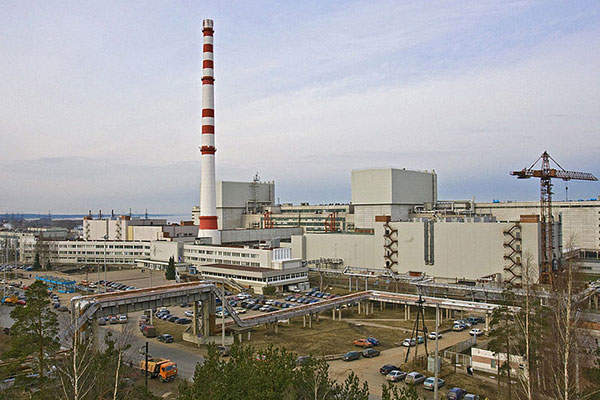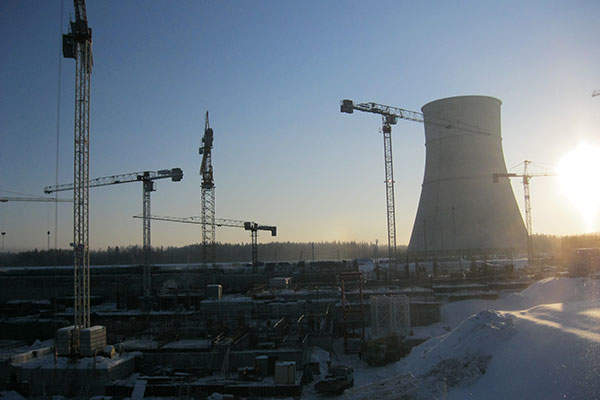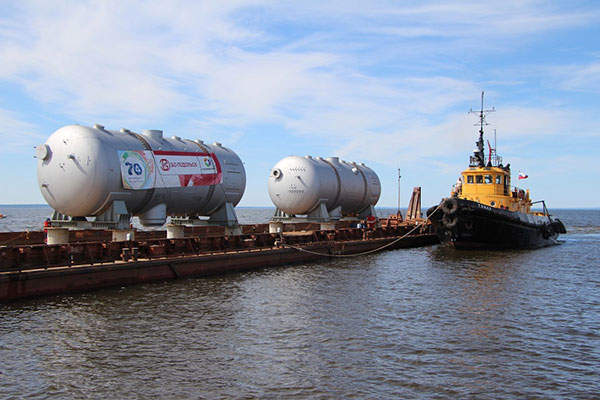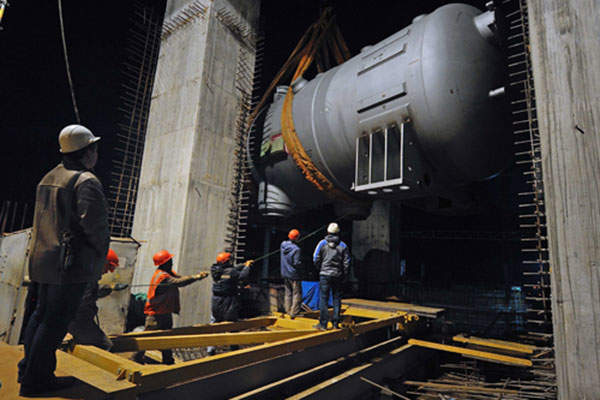The Leningrad nuclear power plant-2 (LNPP2) is being developed next to the existing Leningrad nuclear power plant (NPP) in the town of Sosnovy Bor in Leningrad Oblast, Russia. The plant is located on the southern shore of the Gulf of Finland, approximately 70km to the west of the Saint Petersburg city centre.
The project is being developed to replace the existing RBMK-1000 type reactors at the Leningrad NPP, which are nearing expiry. The design life of the first unit is estimated to be until 2018, while the second unit is until 2020, and the third and fourth units are until 2025.
Four upgraded VVER-1200 water-moderated reactors will be installed at the Leningrad NPP-2. Construction of the first unit started in October 2008, followed by the second unit in April 2010. The two units are expected to come online in 2016 and 2018, respectively.
Leningrad NPP details
Adler Power Plant, located in the Sochi District of Russia, is an advanced combined heat and power station (CHPS) built by Gazprom.
Leningrad is one of ten nuclear power plants being operated by Russia’s state-owned utility Rosenergoatom, the world’s second-biggest nuclear power generating utility. The plant is a major producer of electrical power in the Russian North-West and currently generates electricity for more than 50% of St Petersburg and the Leningrad Oblast population.
It is the first Russian nuclear power plant to use the RBMK-1000 reactors (uranium – graphite nuclear reactors of channel type on thermal neutrons). Its construction started in July 1967 and the first unit was launched in December 1973. The other four units were launched in July 1975, December 1979 and December 1981.
As of June 2015, the first unit at the plant is being overhauled, while the remaining three units are operating with a load of 3,020MW.
Leningrad NPP 2 make-up
Leningrad NPP 2 is the second Russian nuclear power plant, the first one being Novovoronezh II, to use VVER-1200 (AES-2006) reactors. It will further be equipped with four PGV-1000MKP steam generators.
The four nuclear reactors are estimated to have an annual electricity output of 32.8 million kWh. Each reactor is also estimated to generate approximately 9.17PJ/yr of district heating.
Each steam turbine weighs more than 2,500t and is designed to operate for 60 years. Heat from the reactor’s primary coolant circuit will be transferred to a secondary circuit to turn water into steam that will drive turbines to generate electricity.
VVER-1200 reactors at Leningrad-2
VVER is a series of pressurised, water-cooled, water-moderated energy reactor designs originally developed in Russia. The main features of the 1200 series reactor include horizontal steam generators, hexahedral fuel assemblies and high-capacity pressurisers that provide a large reactor coolant inventory.
The reactor is designed to produce 1,200MWe of power with optimised fuel efficiency and operate at a capacity factor of 90%.
Its safety features include a containment building and missile shield, while the emergency systems include an emergency core cooling system, backup diesel supply, refuelling machine, backup feed water supply and reactor SCRAM system.
The nuclear reactor and associated systems, including refuelling machine, diesel backup power supply, steam generators and reactor control systems, are accommodated in a single building. The turbo generators are installed in a separate building.
Leningrad-2 nuclear power plant construction
Construction of the foundation plate of the reactor building began in October 2008 and was completed in June 2009.
First concrete was poured for the foundation plate of the second unit’s turbine building in April 2010. The containment dome of the first unit was installed in June 2014. The steam generators for unit 2 were delivered to the construction site in the same month.
Contractors involved with Leningrad NPP 2 development
AtomEnergoProekt (AEP), a company based in St Petersburg, was awarded a $5.8bn contract for the construction of the first two units in March 2008. AEP was also awarded the contract to design the third and fourth units of the nuclear power station.
TITAN-2, operating through its subsidiary Titanstroymontazh, is the general contractor for the project. ZIO-Podolsk, a subsidiary of Atomenergomash (AEM), is the manufacturer of steam generators for the NPP. It is also the supplier of the separation system, reheating system and high-pressure heaters for the plant.
AEM conducted the logistics operations for the delivery of four steam generators from the production site (Podolsk) to the construction site in Sosnovy Bor. ZIO-Podolsk Energospetsmontazh was engaged for building and commissioning the power units of the plant, while JET (GE Energy Technologies) was awarded the contract for the installation of simulator equipment.
Glasovsky Zavod Himmash, part of Russian heavy engineering company OMZ, was contracted to manufacture AFIPE-3,4-1,6-S hydrogen form cation resin deironing filters and AFSDPE-3,4-1,6-S mixed-bed filters for the first two units.
ARAKO, part of Rosatom’s machine engineering division Atomenergomash, is the supplier of industrial valves, stop valves and globe valves for the project. OKBM Afrikantov conducted the acceptance tests of the unit 2 refuelling machinery.








